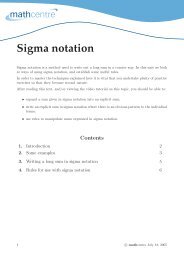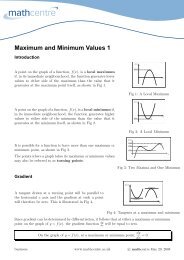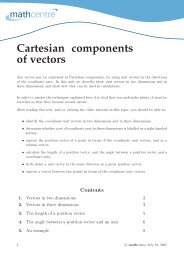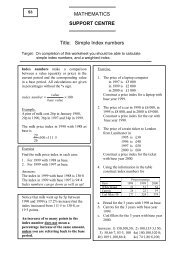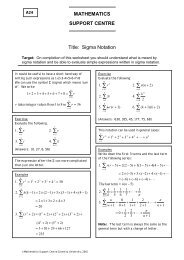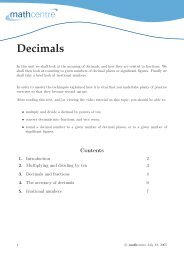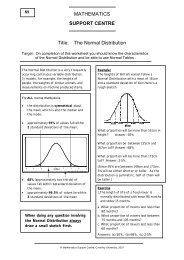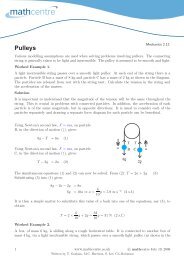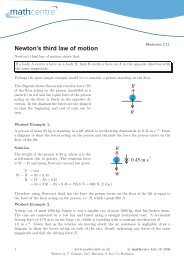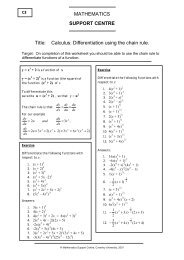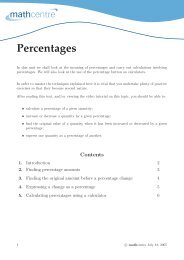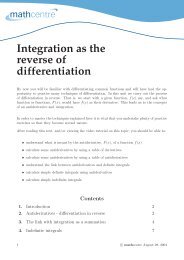Polynomial functions
Polynomial functions
Polynomial functions
You also want an ePaper? Increase the reach of your titles
YUMPU automatically turns print PDFs into web optimized ePapers that Google loves.
In the same way, a quartic could have up to<br />
three turning turning points, and so would<br />
look something like this.<br />
Again, some quartics have fewer turning points, but none has more.<br />
Key Point<br />
A polynomial of degree n can have up to (n − 1) turning points.<br />
5. Roots of polynomial <strong>functions</strong><br />
You may recall that when (x − a)(x − b) = 0, we know that a and b are roots of the function<br />
f(x) = (x − a)(x − b). Now we can use the converse of this, and say that if a and b are roots,<br />
then the polynomial function with these roots must be f(x) = (x − a)(x − b), or a multiple of<br />
this.<br />
For example, if a quadratic has roots x = 3 and x = −2, then the function must be f(x) =<br />
(x−3)(x+2), or a constant multiple of this. This can be extended to polynomials of any degree.<br />
For example, if the roots of a polynomial are x = 1, x = 2, x = 3, x = 4, then the function must<br />
be<br />
f(x) = (x − 1)(x − 2)(x − 3)(x − 4),<br />
or a constant multiple of this.<br />
Let us also think about the function f(x) = (x − 2) 2 . We can see straight away that x − 2 = 0,<br />
so that x = 2. For this function we have only one root. This is what we call a repeated root,<br />
and a root can be repeated any number of times. For example, f(x) = (x − 2) 3 (x + 4) 4 has<br />
a repeated root x = 2, and another repeated root x = −4. We say that the root x = 2 has<br />
multiplicity 3, and that the root x = −4 has multiplicity 4.<br />
The useful thing about knowing the multiplicity of a root is that it helps us with sketching the<br />
graph of the function. If the multiplicity of a root is odd then the graph cuts through the x-axis<br />
at the point (x, 0). But if the multiplicity is even then the graph just touches the x-axis at the<br />
point (x, 0).<br />
For example, take the function<br />
f(x) = (x − 3) 2 (x + 1) 5 (x − 2) 3 (x + 2) 4 .<br />
• The root x = 3 has multiplicity 2, so the graph touches the x-axis at (3, 0).<br />
7 c○ mathcentre July 18, 2005



